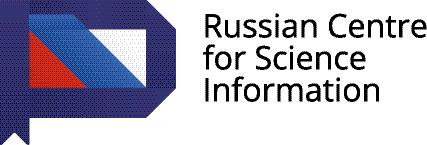Serological Analysis of Immunogenic Properties of Recombinant Meningococcus IgA1 Protease-Based Proteins
- 作者: Kotelnikova O.V.1, Zinchenko A.A.1, Vikhrov A.A.1, Alliluev A.P.2, Serova O.V.1, Gordeeva E.A.1, Zhigis L.S.1, Zueva V.S.1, Razgulyaeva O.A.1, Melikhova T.D.1, Nokel E.A.1, Drozhzhina E.Y.1, Rumsh L.D.1
-
隶属关系:
- M. M. Shemyakin and Yu. A. Ovchinnikov Institute of Bioorganic Chemistry, Russian Academy of Sciences
- Institute of Medicine, People’s Friendship University of Russia
- 期: 卷 161, 编号 3 (2016)
- 页面: 391-394
- 栏目: Article
- URL: https://journals.rcsi.science/0007-4888/article/view/237452
- DOI: https://doi.org/10.1007/s10517-016-3422-2
- ID: 237452
如何引用文章
详细
Using the genome sequence of IgA1 protease of N. meningitidis of serogroup B, four recombinant proteins of different structure and molecular weight were constructed. These proteins were equal in inducing the formation of specific antibodies to IgA1 protease and had protective properties against meningococci. In the sera of immunized mice, anti-IgA1 protease antibodies were detected by whole-cell ELISA, which indicated the presence of IgA1 protease on the surface of these bacteria. We hypothesized that the protective properties of IgA1 protease-based antigens and IgA1 protease analogs could be realized not only via impairment of bacterium adhesion to the mucosa, but also via suppression of this pathogen in the organism. The presented findings seem promising for using these proteins as the basis for anti-meningococcus vaccine.
作者简介
O. Kotelnikova
M. M. Shemyakin and Yu. A. Ovchinnikov Institute of Bioorganic Chemistry, Russian Academy of Sciences
编辑信件的主要联系方式.
Email: ovkot.2003@mail.ru
俄罗斯联邦, Moscow
A. Zinchenko
M. M. Shemyakin and Yu. A. Ovchinnikov Institute of Bioorganic Chemistry, Russian Academy of Sciences
Email: ovkot.2003@mail.ru
俄罗斯联邦, Moscow
A. Vikhrov
M. M. Shemyakin and Yu. A. Ovchinnikov Institute of Bioorganic Chemistry, Russian Academy of Sciences
Email: ovkot.2003@mail.ru
俄罗斯联邦, Moscow
A. Alliluev
Institute of Medicine, People’s Friendship University of Russia
Email: ovkot.2003@mail.ru
俄罗斯联邦, Moscow
O. Serova
M. M. Shemyakin and Yu. A. Ovchinnikov Institute of Bioorganic Chemistry, Russian Academy of Sciences
Email: ovkot.2003@mail.ru
俄罗斯联邦, Moscow
E. Gordeeva
M. M. Shemyakin and Yu. A. Ovchinnikov Institute of Bioorganic Chemistry, Russian Academy of Sciences
Email: ovkot.2003@mail.ru
俄罗斯联邦, Moscow
L. Zhigis
M. M. Shemyakin and Yu. A. Ovchinnikov Institute of Bioorganic Chemistry, Russian Academy of Sciences
Email: ovkot.2003@mail.ru
俄罗斯联邦, Moscow
V. Zueva
M. M. Shemyakin and Yu. A. Ovchinnikov Institute of Bioorganic Chemistry, Russian Academy of Sciences
Email: ovkot.2003@mail.ru
俄罗斯联邦, Moscow
O. Razgulyaeva
M. M. Shemyakin and Yu. A. Ovchinnikov Institute of Bioorganic Chemistry, Russian Academy of Sciences
Email: ovkot.2003@mail.ru
俄罗斯联邦, Moscow
T. Melikhova
M. M. Shemyakin and Yu. A. Ovchinnikov Institute of Bioorganic Chemistry, Russian Academy of Sciences
Email: ovkot.2003@mail.ru
俄罗斯联邦, Moscow
E. Nokel
M. M. Shemyakin and Yu. A. Ovchinnikov Institute of Bioorganic Chemistry, Russian Academy of Sciences
Email: ovkot.2003@mail.ru
俄罗斯联邦, Moscow
E. Drozhzhina
M. M. Shemyakin and Yu. A. Ovchinnikov Institute of Bioorganic Chemistry, Russian Academy of Sciences
Email: ovkot.2003@mail.ru
俄罗斯联邦, Moscow
L. Rumsh
M. M. Shemyakin and Yu. A. Ovchinnikov Institute of Bioorganic Chemistry, Russian Academy of Sciences
Email: ovkot.2003@mail.ru
俄罗斯联邦, Moscow
补充文件







